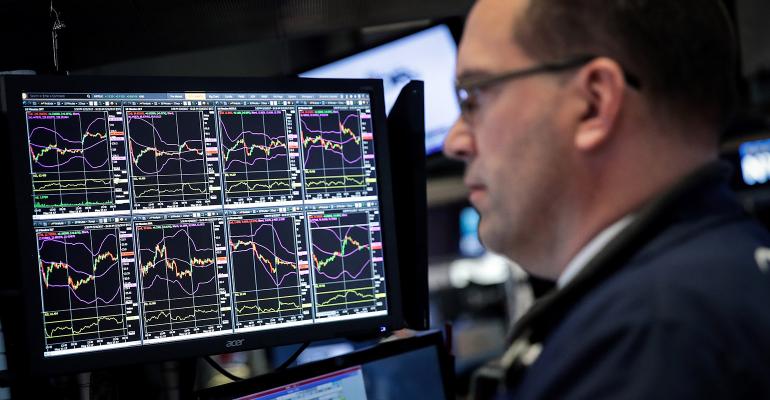By David Jilek
The more things change, the more they stay the same. This adage seems particularly fitting in today’s stock market environment.
As the S&P 500 Index hits new highs, astute market observers have noticed something else hasn’t changed much: The volatility of the stock market has been unusually low for an extended period. That means that stock prices aren’t experiencing the wide range of daily ups and downs that have been historically more typical.
What’s behind this extended period of low stock price volatility? Both short- and longer-term trends have been keeping stock prices relatively stable for some time.
Positive news buoys stocks
Short-term factors driving low volatility in the stock market include a prolonged period of steady U.S. economic expansion and 2016’s strong corporate profit growth. Individual stock prices have also exhibited low correlation to each other. This means that moving up or down largely in tandem, as stock prices did during the Great Financial Crisis of 2008-2009 and the first few years of the market recovery, hasn’t been the case in the recent period.
Lately, some stock prices have zigged upwards while others zagged lower, which has a volatility-reducing impact on the broader market. Similarly, a diversified portfolio of investments can have lower volatility than one of its component investments on a stand-alone basis.
Factors within the structural make-up of the market have also contributed. For example, increased investment in passive strategies and the growing popularity of algorithmic trading techniques have supported the low volatility of stock price movements. To be sure, an abrupt change in the preferences of investment portfolios governed by quantitative models or in the behavior of algorithmic traders could cause a volatility spike with dynamics similar to that of August 2015, but it has yet to happen.
Longer-term trends persist
In addition to these short-term drivers, three longer-term factors may also be contributing to this period of extended low volatility: the post-crisis financial regulation regime, a decrease in competitive forces, and a low corporate investment rate. These phenomena also help explain the unusual brevity of any recent volatility spikes, such as the one associated with Brexit.
Financial regulation
Key aspects of post-crisis financial reform include: reducing leverage, improving capital quality at systemically important financial institutions, and improving transparency. It’s possible that compliance with the new regulatory regime has resulted in less uncertainty about the follow-on effects of any negative market events, which would otherwise bring a shock to the financial system.
Under the previous regulatory regime, the potential for banks to become more prudent in response to negative developments could put continued economic expansion at risk or create the perception that a possible retrenchment by the financial sector could jeopardize economic growth. In the current post-crisis regulation regime, a high degree of prudence at financial institutions is required at all times. As a result, banks don’t need to become “more prudent” in response to negative developments. Furthermore, increased transparency allows for a clearer picture of how banks are responding. One could argue that this results in less uncertainty and less volatility.
Decreased competition
Increasing consolidation of existing businesses and low rates of new business formation during much of the current economic expansion may have resulted in less competition for existing businesses. For example, mergers within certain highly consolidated industries, such as airlines, hotels and telecommunications, as well as those among larger, more focused operators can reduce competitive dynamics and potentially reduce price volatility among companies.
Since the financial crisis, a reduced level of new business formation may have also resulted in less competitive disruption from new entrants in many industries. In fact, the annual number of startups was close to a 40-year low as recently as 2014. Although startup activity increased sharply in 2015, it is too soon to know if that trend will persist.
Low corporate investment rates
The overall rate of corporate investment during the post-crisis economic recovery and expansion has been among the lowest of all expansions since 1961. For example, the investment rates for software and information processing equipment have been lower than during any other expansion. Low investment for future growth, combined with profit margins persistently at the high end of their historical range, suggests that many companies are prioritizing current profitability over future growth. Without large changes in revenue and profitability that can result as growth-oriented spending succeeds or fails, corporate cash flows may be more stable, thus possibly reducing uncertainty and price volatility.
What can investors expect?
A combination of these forces may help explain the low volatility environment that has persisted in recent years.
Although these drivers may be entrenched and the circumstances that brought them about are unlikely to change quickly, events that can rapidly increase volatility, which is a cyclical phenomenon, may overwhelm them at any time. Investors with long-term investment objectives may benefit from remaining diversified while considering different approaches to risk management.
Depending on their individual viewpoint on the markets, investors have a choice. If they assume the low volatility and advancing equity market will continue—and that interest rates will continue to rise, negatively affecting bond returns (which move in the opposite direction from interest rates)—one thing to consider could be to lighten up on core fixed income and consider instead low volatility equity strategies to maintain risk profile while accessing the higher returns that stocks have historically offered over bonds.
If, on the other hand, investors believe that an increase in volatility and the end of the bull market are right around the corner, they could also consider lightening up on pure stock market exposure and turning to low volatility stock strategies, which can deliver meaningful downside protection once a downturn begins.
We don’t know when the market may transition from a low volatility regime to a period of elevated volatility. However, when it does, incorporating investments with reduced interest rate sensitivity and stock market downside protection could be an important consideration for stock investors.
David Jilek is chief investment strategist, Gateway Investment Advisers, LLC.





